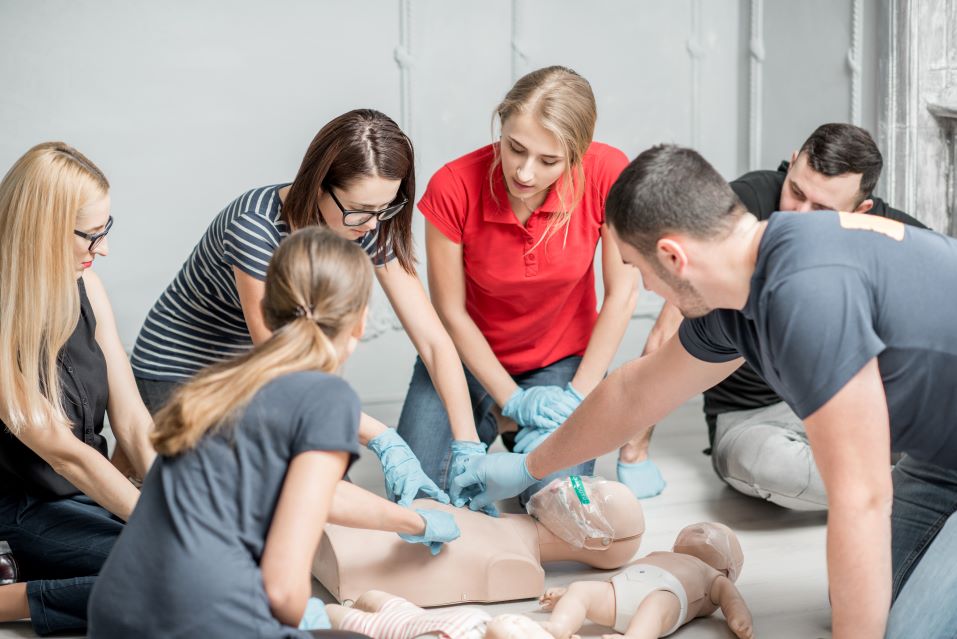Having an asthma action plan is essential in this day and age. Asthma is a medical condition that affects the airways. People with asthma might find it hard to breathe in and out. This is because the airways in their lungs become narrower, like trying to breathe, but the air is stuck! According to the Australian Bureau of Statistics, a reported 2.7 million Australians have asthma. Asthma can affect everyone, from children to adults, at any age. It is slightly more common in females than males. It can also cause death if an asthma action plan is not in place!
What Is Asthma, And What Causes It?
Asthma is a medical condition that affects the airways. It limits the amount of air that can be inhaled into the lungs. It can be caused by various factors, and some things might increase the severity of asthma. This is:
- Viral respiratory infections (e.g. flu and cold)
- Indoor allergens (e.g. dust mites, pet fur)
- Outdoor allergens such as pollens or moulds
- Cigarette smoke
- Chemical irritants at the workplace
- Air pollution
- Strong odours such as perfume
And a range of other less common irritants such as cold air, changes in temperature, thunderstorms, hormonal changes, pregnancy and physical activity.
These circumstances cause asthma because they irritate the airways, causing an adverse reaction. The national asthma association identified that this causes airways to tighten up, thicken up, to fill up with mucus. In extreme cases, this can cause death; however, death is rare with appropriate planning, a first aid course, and an excellent asthma action plan.
Signs And Symptoms Of Asthma
There are a large number of signs and symptoms which can affect asthma and affect a person’s airways. But what about signs and symptoms? How can I tell if someone is having an asthma attack?
The Most Common Symptoms Are:
- Wheezing
- Feeling of not being able to get enough air
- Short of breath
- Feeling of tightness in the chest
- Coughing
- Chest pressure
- Throat irritation
These symptoms can be visibly noticeable if someone has difficulty breathing, coughing, and having chest pains. It could be that they are having an asthma attack.
Prevention Tips
Asthma is not incurable; there are many different treatments and medications to reduce the effects of asthma and treat its sometimes severe symptoms. Relievers and Preventers are the two main sources of relief for asthma and can be used in conjunction with other asthma medications depending on the severity of the symptoms.
Relievers
Are medicine used for rapid relief and treatment of asthma symptoms when they flare up. Also known as Puffers. Relievers relax the airway muscles and open the airways. They make it easier to breathe. Puffers usually last up to 4 hours, making them a good source of pain relief. It can also be used to reduce flare up’s caused by exercise.
Preventers
Are similar to puffers but are known as inhalers. They reduce the inflammation (redness and swelling) in the airways, making them less sensitive. They are a form of prescribed medicine and are usually supplied to people who have asthma symptoms twice or more within a month, woken up by asthma or have had flare-ups that require urgent visits to a medical professional. However, unlike relievers, preventers take several days or weeks to work.
Understanding Your Triggers
Can solve a life of pain. Understanding what triggers your asthma can be great to prevent any serious asthma attacks. Knowing what makes your asthma flare-up is important as you can get yourself out of harms way. Avoiding certain environments or doing background checks on weather to avoid pollen, or even cleaning surfaces frequently to avoid dust. It can help dramatically decrease you’re risk of an asthma attack and improve your quality of life!
These items are super important to be carried with someone who has asthma and should also be included in you’re asthma action plan!
@firstaidproau How to use an inhaler spacer correctly! #asthma #fyp #foryoupage #firstaid #learnhow #tiktoktaught #tips #facts #education #inhaler #spacer ♬ Trending upbeat corporate sound ♪ - 3KTrack
What Can You Do If You Or Someone Else Is Having An Attack?
Get First Aid Training!
If someone is having an asthma attack having general first aid knowledge can be vital. The first aid and CPR courses offered by First Aid Pro goes into the details of how to cope and plan for someone with asthma. The first aid course can provide life-saving information on how to save some suffering with certain conditions that occur from asthma since asthma attacks can come from nowhere. A first aid course can make you ready for an emergency!
First Aid Pro offers a superb first aid course; it covers a lot of different aspects and is a nationally recognised course at a very reasonable price too. If you struggle with asthma or know someone who does, a first aid course can be life-saving and teach you valuable skills for an emergency situation.
In Case Of An Asthma Attack
The National Asthma Council has a significant step by step procedure to follow in case of an asthma attack. If someone is suffering from an asthma attack:
Step 1: Sit the person comfortably upright
Step 2: Give 4 puffs of a blue/grey reliever, 1 puff per breath, and if available using a spacer to make sure they are breathing in the reliever. Give 1 breath at a time and 4 breaths between puffs.
Step 3: Wait 4 minutes, if the person still cannot breathe, repeat step 2
Step 4: If the person still cannot breathe normally. Call an ambulance (Dial 000) and repeat steps 2 and 3 until the ambulance arrives.
If you are suffering an asthma attack and there is no one nearby who can help, dial triple 000 immediately and follow the steps above if possible.
What To Do? The Basics Of An Asthma Attack
In 2018 there were 389 deaths caused by asthma, according to the Australian Institute of Health and Welfare. So it is essential to know what an asthma attack looks like and how to combat it. An asthma attack or asthma flare occurs when symptoms startup but do not go away without treatment. Flare up’s can happen quickly, for example, if you are suddenly exposed to smoke. Or they can gradually appear over time from a cold. These flare-ups can be severe if not treated properly, even with mild symptoms.
Having An Asthma Action Plan
Having an asthma action plan if you or someone you know has asthma can be vital for ensuring the safety of yourself and others. A written asthma action plan is a written set of instructions that can help someone identify what someone needs to do when they are having an asthma attack or just general notes about their asthma condition.
This will usually include a variety of information about a person’s asthma traits:
-Instructions on medications and where they are kept
-A list of the person’s known asthma triggers to decrease exposure to the trigger
-Advice on determining if the asthma is getting worse
-Instruction on what to do when and if symptoms get worse
It should be written clearly and concisely so that whoever is reading it can easily understand what is wrong and how to help. This asthma action plan should be made handy, a paper slip within your wallet or a piece of paper within your safety kit.
First Aid Course Near Me
Asthma is a serious condition that can vary in severity from person to person. However, it is still important to understand what causes asthma and how to help as almost 1 in 9 people in Australia have it.
Asthma is caused by the airways restricting airflow and creating mucus which stop reduce oxygen from reaching the lungs. Understanding what causes your asthma and loved ones can save lives! Have an asthma action plan which details what triggers your asthma, how to tell how bad symptoms are and if they are getting worse. Book in for a First Aid course, too, to make sure you know how to respond!








